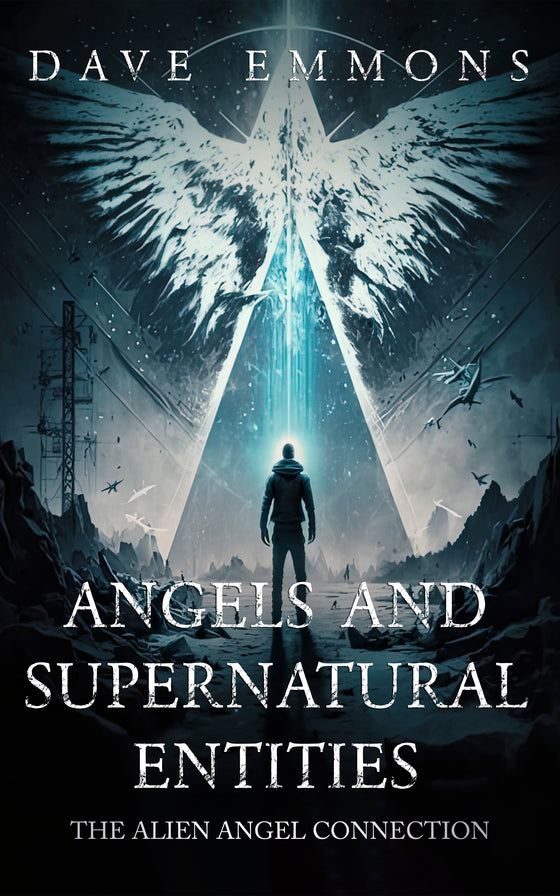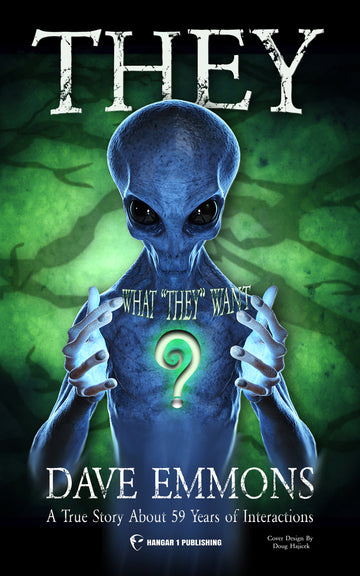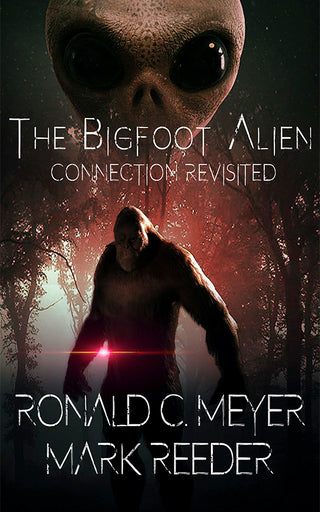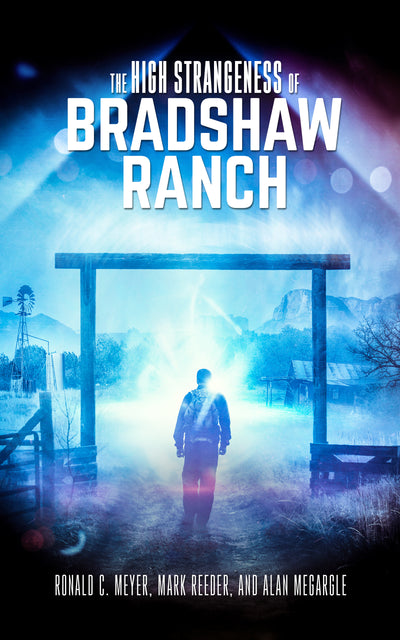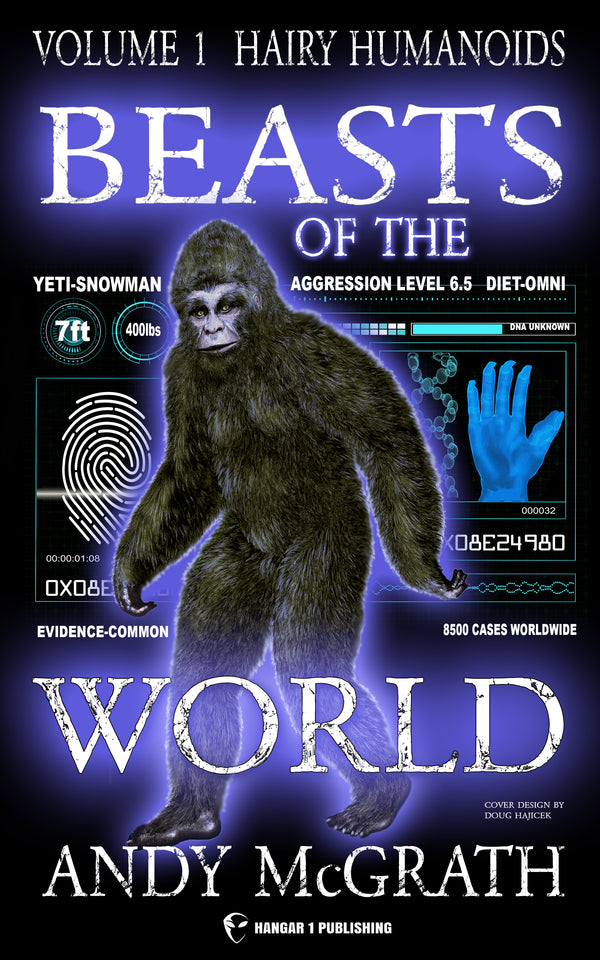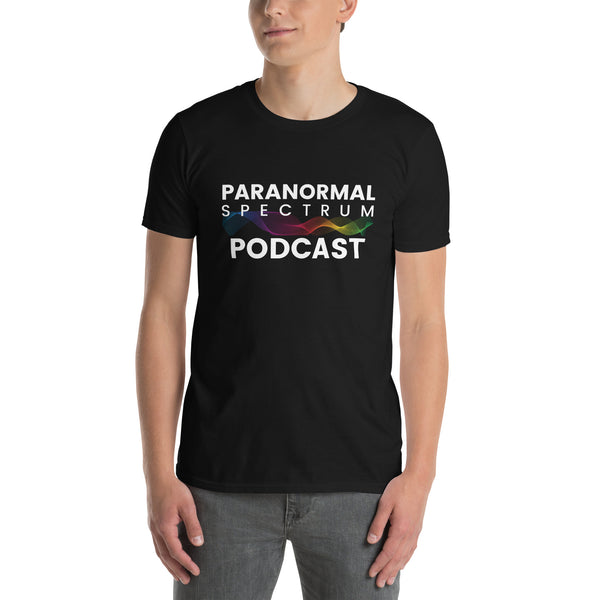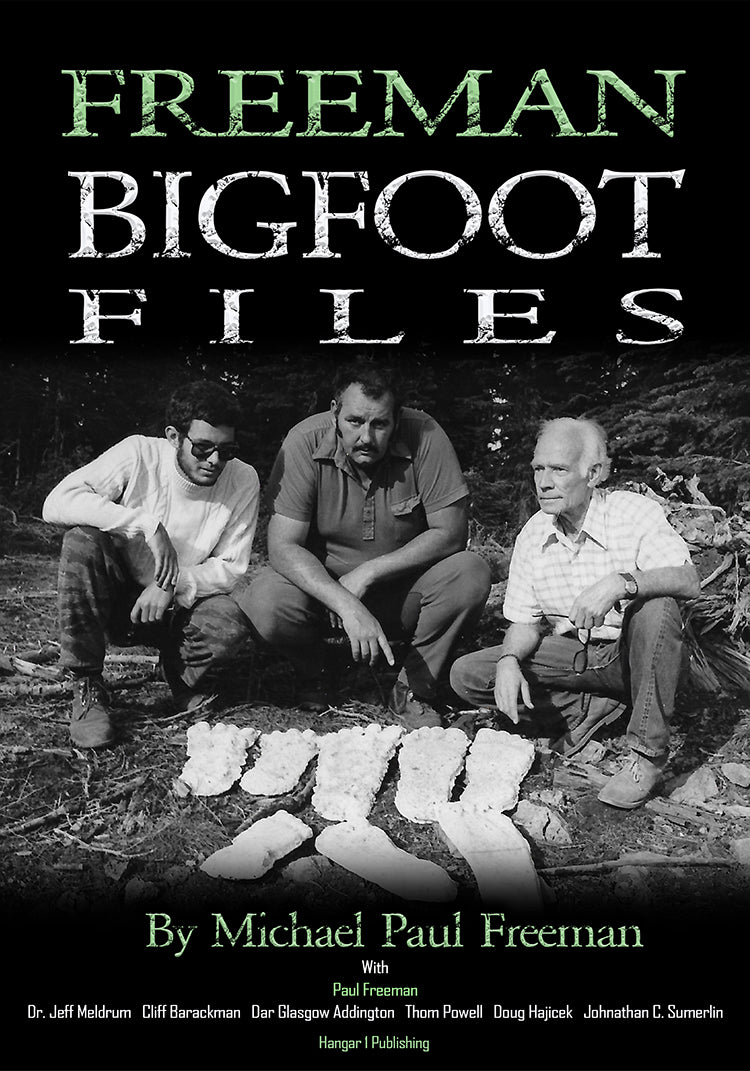Bio-luminescent UFOs: What Decades of Documentation Actually Reveals

By Malcolm Blackwood, Ufologist
I've been at this for over three decades now, and I can tell you that the term "bio-luminescent UFO" isn't something you'll find in any official government report. It's what enthusiasts call those sightings that glow, pulse, or move like something alive. Think jellyfish drifting through the sky, or organisms radiating their own light.
But here's what matters: while the label is informal, the phenomenon it describes shows up repeatedly in documentation. And after years of cross-referencing reports, FOIA responses, and scientific literature, I can tell you most of these cases have mundane explanations. Most, but not all.
What We're Actually Talking About
When someone reports a "bio-luminescent UFO," they're describing something self-illuminating with organic characteristics. The Immaculate Constellation document provided to Congress uses the phrase "floating-brain/jellyfish UAPs" to describe objects with "patterned luminescence or fluctuating lights/colors." Some appear in infrared as "mottled irregularly with hot/cold emissions" with appendages hanging down.
That's about as close as official documentation gets to acknowledging this specific subset. The rest falls under the umbrella of insufficient data in reports from ODNI and NASA's independent study team.
After sorting through thousands of reports, I've broken these sightings into four categories:
- Anomalous technological or engineered light sources
- Natural atmospheric phenomena (plasma, lightning variants)
- Actual biological bioluminescence (marine organisms)
- Sensor and optical artifacts (camera tricks)
Getting the taxonomy right means you can filter signal from noise.
The Government's Limited Interest
Let me be blunt: AARO and other agencies aren't losing sleep over glowing jellyfish reports. When these cases come up, they're typically cataloged as data-poor outliers. The focus stays on flight safety and potential adversary technology.
The UK took a different approach. Their Project Condign, conducted between 1997 and 2000, concluded that most inexplicable UAP sightings could be attributed to "novel meteorological plasma phenomenon akin to ball lightning." They theorized these plasma formations could appear controlled in their movement and be self-luminous.
Whether you buy that explanation or not, it represents the most direct official attempt to account for luminous phenomena. The rest of the government record amounts to acknowledgment without explanation.
What the Data Shows
I've spent considerable time analyzing the National UFO Reporting Center database, which contains over 147,000 reports as of January 2024. Filtering for keywords like "glowing," "luminous," "orb," and "jellyfish" gives you roughly 5,900 cases, about 4% of the total.
Using methodology from RAND Corporation's 2023 study and environmental analysis of UAP sightings, clear patterns emerge:
Over 60% of "glowing orb" reports come from counties within 50 miles of an ocean or Great Lakes coastline. Summer months see a 40% spike in reports. And specific events trigger massive localized surges. The December 2017 SpaceX Falcon 9 launch over Southern California generated hundreds of "jellyfish UFO" reports in a single evening.
California leads with 16,999 total reports, but when you normalize by population, Washington, Montana, Vermont, Alaska, and Oregon top the list.
The takeaway? Geography and timing matter. Coastal proximity plus clear summer nights plus aerospace activity equals report spikes.
The Ocean's Light Show
Before you can call something anomalous, you need to rule out the natural world's own light displays. The ocean produces spectacular bioluminescence that pilots and coastal observers regularly mistake for aerial phenomena.
Milky seas are the big ones. These are massive bacterial blooms where thousands of square kilometers glow with a steady, uniform light. A 2019 event south of Java covered over 100,000 square kilometers and lasted for weeks. Satellite sensors detected it from space using the VIIRS Day/Night Band.
The glow comes from bacteria like Vibrio harveyi communicating through quorum sensing. Peak emission hits around 490 nanometers, that blue-green wavelength. From the air at night, it looks otherworldly.
Then you have dinoflagellates, the plankton that flash when disturbed by waves or boats. A large bloom creates waves of light across the water surface. The flashes last about 100 milliseconds per organism, but with billions of them, the effect is continuous.
The Sky's Electrical Displays
High above thunderstorms, electrical discharges create shapes that look disturbingly organic. Transient Luminous Events, or TLEs, include sprites, blue jets, and ELVES.
Sprites occur at altitudes of 40-90 kilometers and can have that classic jellyfish morphology: a bright haloed top with trailing tendrils. They're reddish-orange and last only milliseconds. ELVES are even briefer, less than a millisecond, appearing as rapidly expanding rings of red light at about 90 kilometers altitude.
Down at ground level, ball lightning remains rare and poorly documented. A 2014 study captured the first-ever natural spectrum, finding emission lines from silicon, iron, and calcium. That supports the theory that lightning vaporizes soil elements, creating a floating, glowing sphere that oxidizes over several seconds.
When Technology Tricks the Eye
Modern aerospace has created a whole new category of false positives. Rocket launches after sunset produce spectacular twilight phenomena. High-altitude exhaust plumes, illuminated by the sun while the ground is dark, twist into massive glowing shapes. The water vapor and hydrocarbons catch the light just right, creating those "space jellyfish" that flood 911 call centers.
Starlink satellite trains cause nationwide report surges. Dozens of satellites flying in formation before spreading out look like a string of lights moving silently across the sky. Check satellite pass predictors and you'll solve most of these cases.
But the real culprit? Camera artifacts. AARO's green triangle case turned out to be bokeh, where an out-of-focus point light source takes the shape of the camera's aperture. Every photography enthusiast knows this effect, but bokeh fools sensors and observers constantly.
Long-exposure photography creates glowing, tentacled shapes when a moving light source smears across the sensor. Lens flare produces orbs and rainbow shapes that move in relation to bright lights in frame. These optical illusions are responsible for a massive percentage of "organic" luminous shape photographs.
Hessdalen: The Real Mystery
Here's where it gets interesting. Most luminous UAP reports fold into natural or artificial explanations. But Hessdalen, Norway has produced instrumented data that defies simple categorization.
Since 1984, recurring luminous phenomena in this valley have been studied with cameras, radar, magnetometers, and radio spectrum analyzers. An Automatic Measurement Station has collected objective data since 1998.
The lights appear as spherical orbs, sometimes composed of multiple smaller orbs vibrating around a central body. They range from decimeters to 30 meters in diameter. Light-curve analysis shows a non-thermal pattern with constant color temperature around 6500 K even as brightness fluctuates dramatically. The lights pulse semi-regularly, with major on-off cycles of about ten seconds and smaller oscillations of about one second.
Low-resolution spectra captured in 2002 showed distinct peaks resembling a combination of blue, amber, and red LED-like lights, plus a possible silicon line at 510 nanometers. This doesn't match blackbody radiation or standard incandescent profiles.
Radar tracking has recorded speeds up to 8500 meters per second (over 19,000 mph). The lights often produce strong but intermittent radar signatures, sometimes appearing on radar when optically invisible, and vice versa. VLF radio anomalies correlate with sightings, showing pulsating magnetic disturbances that don't match known sources.
In one documented case, a light altered its flashing sequence in response to a laser beam aimed at it.
This multi-sensor, multi-decade observation program represents the gold standard for investigating luminous UAP. The data rules out simple aircraft or conventional ball lightning explanations. Current hypotheses involve dusty plasmas, piezoelectric effects from local geology, or electrochemical processes, but no single model accounts for all observed characteristics.
The Biological Question
Could a giant, bioluminescent organism actually float through the sky? The physics say no.
A single Hessdalen light radiates up to 19 kilowatts of optical power. Even assuming 100% efficiency (which is impossible), generating that sustained output would require a metabolic rate that dwarfs any known animal. The firefly bioluminescence system has one of the highest known quantum yields at 61%, but a firefly flash lasts about 100 milliseconds and emits a tiny fraction of a watt.
Scale that up to 19,000 watts and you're looking at an organism requiring a mass of several tons just to support the energy budget. Then add the requirements for powered flight or buoyancy in atmosphere.
A gelatinous creature, mostly water, would be incredibly heavy. Achieving neutral buoyancy would require impossibly large gas bladders. Marine organisms like jellyfish aren't built to survive in air. They'd face desiccation, structural collapse from gravity, and UV damage.
Reports of transmedium UAP describe objects entering water at over 100 mph with no speed change. That would destroy any biological entity we know.
Based on current biology, a "bio-luminescent UFO" is far more likely to be a physical or technological phenomenon that mimics biological form than an actual living creature.
How to Investigate Properly
If you're serious about collecting publishable data, here's what you need:
Minimum Equipment
Two synchronized DSLRs or mirrorless cameras for triangulation and parallax. Shoot in RAW format with manual focus. Add Star Analyser 100 gratings for low-resolution spectroscopy to distinguish continuum versus emission line sources. GPS-enabled intervalometers stamp precise time and location on every frame. Audio recorders capture associated sounds or document silence. Stable tripods are non-negotiable.
That basic kit runs under $1,500.
Publication-Ready Setup
Add a portable spectrometer like the Ocean Insight FLAME for medium-resolution spectral capture. Include wavelength and radiometric calibration kits with Hg-Ar/Ne lamps and NIST-traceable sources. GPS 1PPS time sync like Tentacle Sync gives you sub-millisecond timing accuracy across all devices. VLF/ELF receivers and magnetometers detect electromagnetic disturbances. A portable weather station logs environmental conditions. An all-sky camera provides constant contextual monitoring.
This setup costs around $6,000 but generates scientifically valid data.
The Protocol
Before deploying, cross-reference time and location with known sources. Check launch calendars, satellite pass predictors, and FAA NOTAMs for rocket launches, drone shows, and fireworks. Check flight trackers for all local air traffic. Check space weather for geomagnetic activity.
Set up two or more stations with a known baseline distance for triangulation. Synchronize everything to GPS or NTP. Perform wavelength calibration on spectrometers. Capture dark frames, flat frames, and bias frames for photometric calibration.
During a sighting, both stations must record simultaneously. One camera should have a diffraction grating for spectral capture. Use manual focus set to infinity, manual exposure, and RAW format. Never use autofocus or auto-ISO.
Test for artifacts. Briefly de-focus to check for bokeh. Pan slightly to see if internal reflections move symmetrically. Capture wide-field shots with horizon and landmarks for astrometry. Record a known star with the spectrograph for reference. Verbally narrate everything into an audio recorder with timestamps.
Preserve data integrity. Don't alter original files. Generate SHA-256 hashes immediately after capture for chain of custody. Convert images to FITS format with detailed headers. Upload the complete, unaltered dataset including calibration frames to an open-access repository like Zenodo under a CC0 or CC-BY license. NASA's UAP panel specifically recommends this approach for enabling independent replication and analysis.
Rating the Evidence
Not all sightings carry equal weight. I use a five-tier system adapted from Hynek, Vallée, and GEIPAN classifications:
Tier 5: Scientifically Significant. Multi-sensor, multi-station, calibrated data. Requires medium-to-high resolution spectrum showing distinct emission or absorption lines, high signal-to-noise ratio light curves, precise 3D trajectory from GPS-synced stations, correlated electromagnetic data, and all known sources ruled out with data. Raw data must be publicly available. Some Hessdalen events approach this tier but often lack simultaneous high-quality data across all channels.
Tier 4: High-Value Anomaly. Instrumented single-station or uncalibrated multi-station data. Requires low-resolution spectrum showing clear features, high-quality video showing non-ballistic motion or extreme acceleration, corroboration between two different sensor types, and major known sources ruled out. The 2013 Aguadilla, Puerto Rico case is strong Tier 4, with high-quality thermal video showing a transmedium object with anomalous speed retention, but lacking triangulation, spectroscopy, or other electromagnetic data.
Tier 3: Credible but Unexplained. Multiple credible independent witnesses or a single high-quality video. Requires multiple observers in different locations describing the same phenomenon, clear stable video with intact metadata, basic artifact analysis ruling out bokeh and flare, and obvious sources like the Moon or Venus checked and ruled out.
Tier 2: Anecdotal Report. Single witness with some detail but no media or independent corroboration. Description includes color, shape, duration, and movement. Report filed with NUFORC or MUFON. Lacks verifiable evidence. This covers typical "glowing orb" reports.
Tier 1: Insufficient Data. Vague report or media highly likely to be a known phenomenon. Description matches a known source (string of lights equals Starlink, jellyfish after sunset equals rocket plume). Video is blurry, unstable, or shows obvious sensor artifacts.
This framework shows that even with amateur equipment, you can collect Tier 3 or Tier 4 evidence. The goal is systematically moving compelling sightings up the tiers by adding verifiable instrumental data.
Where We Stand
After three decades of document analysis and cross-referencing reports, here's my assessment:
The vast majority of "bio-luminescent UFO" reports, probably 95% or more, have conventional explanations. Marine bioluminescence, atmospheric electrical phenomena, rocket launches, satellite trains, and camera artifacts account for the bulk of sightings.
But there's a residue. Cases with instrumental data that don't fit neat categories. Hessdalen stands out because it has decades of multi-sensor observations showing non-thermal spectra, extreme velocities, and complex pulsations that defy simple explanation.
The biological hypothesis, giant glowing organisms floating through the atmosphere, runs up against insurmountable physics and energy requirements. If these phenomena are real, they're more likely plasma-based, technological, or represent physics we don't fully understand yet.
What frustrates me is how much time gets wasted on low-quality anecdotal reports when the field needs systematic, instrumented observation. The NASA UAP panel emphasized this point: calibrated, multi-sensor data is what moves the needle.
The answer isn't hiding in classified programs or waiting for government disclosure. It's in the work of civilian researchers willing to deploy proper equipment, follow rigorous protocols, and share data openly. That's what will shrink the volume of unknowns while magnifying the credibility of genuine anomalies.
I've been at this long enough to know that extraordinary claims require extraordinary evidence. Most "bio-luminescent UFO" reports don't meet that threshold. But the ones that do, backed by multiple sensors and verified data, those are worth our attention. Those are where the real investigation begins.
From Bigfoot to UFOs: Hangar 1 Publishing Has You Covered!
Explore Untold Stories: Venture into the world of UFOs, cryptids, Bigfoot, and beyond. Every story is a journey into the extraordinary.
Immersive Book Technology: Experience real videos, sights, and sounds within our books. Its not just reading; its an adventure.








